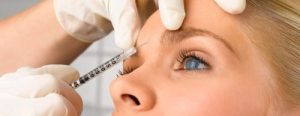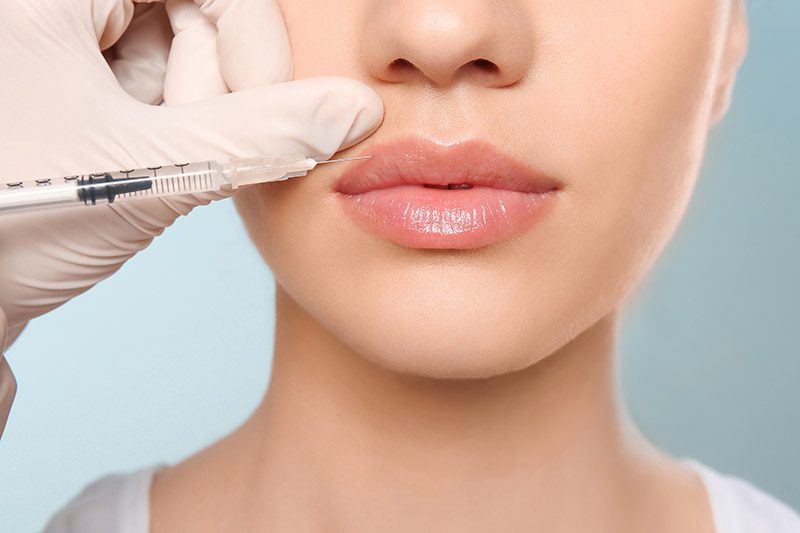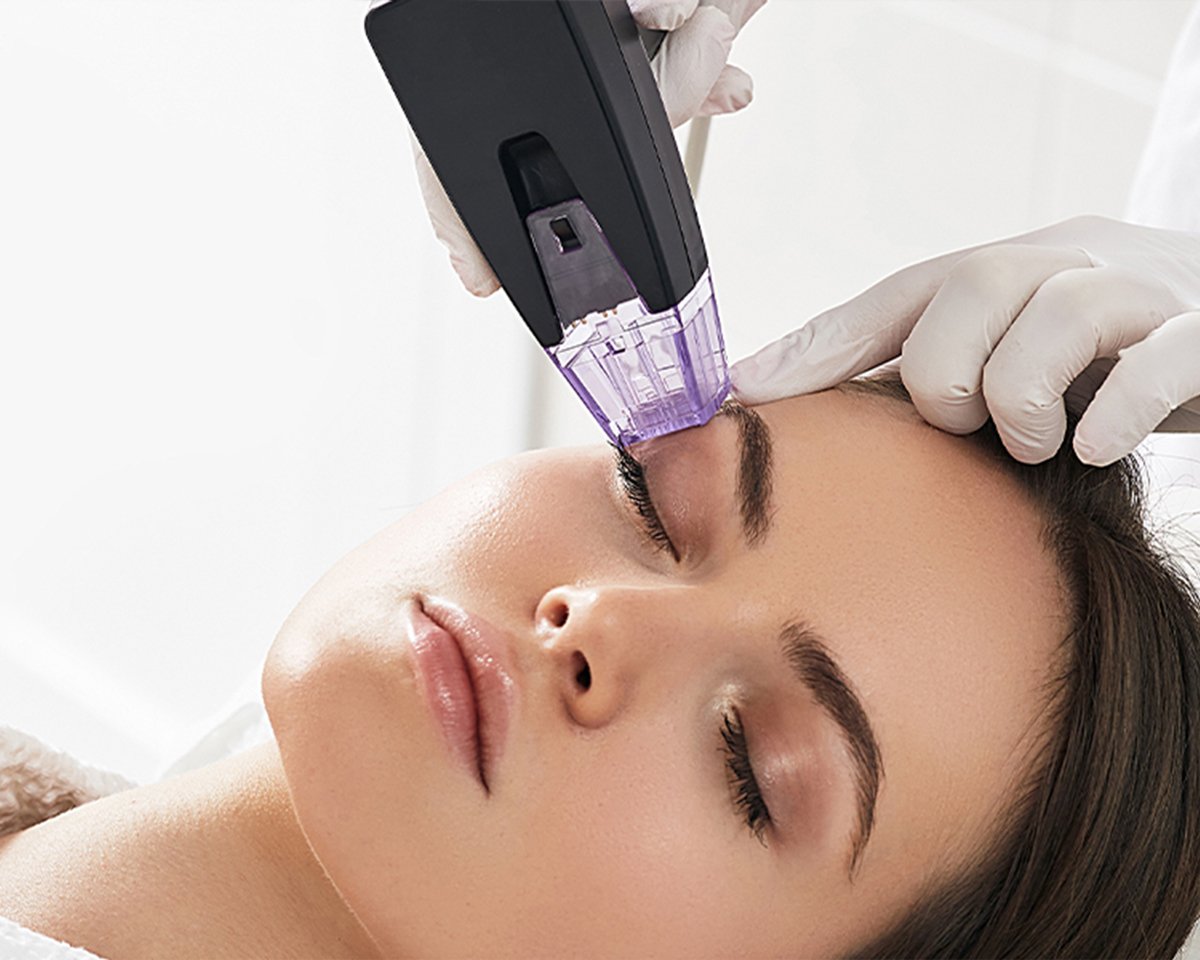
What is Botox?
Botox® stands as one of the most recognized brands when it comes to botulinum toxin injections in Dubai and all over the world. Botulinum toxins are a class of neurotoxins that impact nerves, resulting in muscle weakening. Botulinum toxin injections can be administered for both cosmetic and medical purposes. Healthcare professionals utilize small quantities of botulinum toxin to target specific muscles, effectively smoothing wrinkles, averting migraine headaches, and addressing a diverse array of health-related conditions like Masseter Botox for bruxism.
Botox is a well-known brand of toxin derived from the bacterium Clostridium botulinum. Alongside Botox, there are other brands like Dysport and Xeomin. Botox is the most frequently mentioned term due to its status as the pioneering injectable botulinum toxin.
Botulinum toxin injections involve the administration of a substance that temporarily inhibits muscle movement. Primarily known for their ability to smooth facial wrinkles, these injections serve multiple medical purposes. Botulinum toxin can effectively treat conditions such as neck spasms, excessive sweating, overactive bladder, and even lazy eye. Additionally, Botulinum toxin shots have shown promise in preventing migraine headaches.
It’s important to note that the active ingredient in Botox injections is derived from the same toxin responsible for a form of food poisoning known as botulism. However, the purified forms of botulinum toxin used by licensed healthcare providers adhere to stringent medical standards. These standards have received approval from the U.S. Food and Drug Administration (FDA). When administered correctly, these bacterial toxins pose no harm in medical applications.
How does Botox® work?
Botulinum toxin operates by blocking the nerve signals directed to muscles, thereby preventing them from contracting. These effects, while temporary, typically endure for several months. Consequently, the targeted muscle remains unable to contract, leading to the relaxation and softening of wrinkles.
What is Botulinum toxin used for?
Botulinum toxin finds its primary use in treating forehead lines, crow’s feet (the lines around the eyes), and frown lines. It’s important to note that Botulinum toxin may not be effective for addressing wrinkles resulting from sun damage or the effects of gravity. However, Botulinum toxin shots can also serve as effective treatments for various other conditions, including:
- Excessive underarm sweating (hyperhidrosis)
- Cervical dystonia, a neurological disorder leading to severe muscle spasms in the neck and shoulders
- Involuntary, uncontrollable blinking (blepharospasm)
- Strabismus, a condition where the eyes deviate in different directions
- Chronic migraine management
- Overactive bladder control
- Masseter Botox for bruxism
What cosmetic conditions can be treated with Botox®?
Botulinum toxin cosmetic injections are employed to combat the visible signs of aging. This treatment is designed to reduce the appearance of fine lines and wrinkles in various facial regions, including:
- Eyebrows
- Forehead
- Nose
- Eyes (crow’s feet)
- Lips
- Chin
- Jawline
- Neck

botox dubai. botox injection. masseter botox. botox before and after.
What medical conditions can be treated with Botox?
Botulinum toxin has had a long history of application in the medical field. These injections may be advised for the management of a range of conditions, including:
Neck spasms (cervical dystonia): This painful condition leads to uncontrolled contractions of the neck muscles, resulting in uncomfortable head twisting or turning.
Other muscle spasms: Conditions like cerebral palsy and nervous system disorders can cause limbs to pull towards the body’s center, and muscle spasms can manifest as eye twitching.
Lazy eye (crossed eyes or misaligned eyes): Lazy eye typically stems from an imbalance in the eye muscles responsible for movement.
Excessive sweating (hyperhidrosis): Botulinum toxin may be used to address excessive sweating, a condition where individuals perspire profusely, even in non-strenuous or hot conditions.
Migraine management: Botulinum toxin injections can help reduce the frequency of migraine headaches, particularly in cases of chronic migraine, which entails experiencing severe headaches 15 or more days a month. Treatment intervals are typically around every three months to maintain the therapeutic effect.
Bladder problems: Botulinum toxin shots can effectively alleviate urinary incontinence attributed to an overactive bladder.
- Bruxism (Teeth grinding): Masseter Botox can be used as a treatment for the symptoms of bruxism. When injected into the masseter muscles, Botulinum toxin can reduce their activity, preventing excessive teeth clenching and grinding. This, in turn, can alleviate the associated symptoms.
What Are the Side Effects of Botox?
Following a Botulinum toxin injection, you may experience some temporary side effects, which can include:
Bruising: This is the most commonly reported side effect and typically resolves over time.
Headaches: Although relatively rare, headaches may occur and usually subside within 24 to 48 hours.
Eyelid drooping: This occurs in a small percentage of individuals and often resolves within three weeks. Avoid rubbing the treated area to prevent the migration of Botulinum toxin.
Crooked smile or drooling
Eye dryness or excessive tearing
Mild pain or swelling around the injection site
Flu-like symptoms or a general feeling of being unwell
Upset stomach
Numbness
Weakness in nearby muscles
Who Should Not Get Botox?
You would not be considered a candidate for Botox® treatment if you have any of the following (Contraindications):
- Under 18 years old
- Myasthenia Gravis
- Allergy to Botulinum Toxin or a history of severe allergy or anaphylactic shock.
- Neuromuscular or Neurologic disorder
- Pregnant or breastfeeding
- Allergy to human albumin
- Skin infection near the area to be treated
- Keloidal scarring
- Body dysmorphic disorder
- Amyotrophic lateralizing sclerosis myopathies
- Allergic to cow’s milk protein.
Procedure details
How should I prepare for Botox?
- It is best to schedule Botulinum toxin treatments at least 2 weeks, ideally 4 weeks before a big event. Results from the Botox injections will take approximately 4 to 7 days to appear. Also bruising and swelling may be apparent in that time period. You may need a touch-up after 2 weeks of the treatment.
- Avoid pain relievers called “NSAIDs,” such as aspirin, ibuprofen (generic, Advil, Aleve or Motrin), Voltaren and blood thinning agents such as Vitamin E, Ginko Biloba, St. John’s Wort and fish oil or omega-3s to prevent bruising 7-10 days before the treatment. It is important that you alert us of any medical conditions you may have and/or any prescribed medications you are taking prior to your treatment.
- If you are taking prescription blood thinners such as Coumadin or Plavix, you should check with the prescribing doctor to see if you are able to stop these medicines for 7-10 days before your appointment and at least 2 days after the procedure has been done.
- Discontinue Retin-A two days before and two days after treatment.
- If you have a current cold sore or an acne breakout on the target Botulinum toxin area, reschedule your appointment. If you have any history of Herpes Simplex (cold sores) on your face, make sure you inform the doctor that you have made your appointment with, one week before your appointment.
- Avoid smoking and alcoholic beverages for 24 hours before the procedure as this can increase the risk of bleeding and bruising.
- Avoid waxing, bleaching, tweezing, or the use of hair removal creams in the area(s) to be treated.
- Don’t skip breakfast. The morning of, consume plenty of food and drink as this will decrease the chances of lightheadedness during the treatment. Make sure you eat close to your appointment.
- Avoid exposure to the sun as it’s difficult to administer the treatment on sunburnt skin.
- Please come to your appointment with minimal or no make-up on the areas that are going to be treated. If worn, please remove it before treatment.
- There are no restrictions on flying but we recommend our patients avoid flights for at least 72 hours, preferably two weeks after the treatment appointment.

What should I expect during Botox treatment?
During Botulinum toxin therapy, your healthcare provider utilizes a fine needle to administer small quantities of Botulinum toxin into the targeted area. Depending on the specific concern, you might receive multiple injections in different areas. Here are some key details to keep in mind about Botulinum toxin treatment:
Botulinum toxin is typically an outpatient procedure, allowing you to return home on the same day.
The discomfort experienced during the procedure is generally mild. While the injections may cause a brief stinging sensation and some discomfort, the process is swift. In certain cases, your healthcare provider may apply a topical numbing agent to your skin before administering the injections to enhance your comfort.
What should I know about Botox aftercare?
- Expect some redness, small pin prick marks, and minor bruising.
- No touching, rubbing, physical pressure, or massaging of the injected area for 6 hours after treatment, including facials. Avoid headwear that is tightly fitted across the forehead.
- Sit upright for the first 6 hours after getting Botulinum toxin . Bending or lying down might spread the toxin and promote bruising.
- Try your best to avoid sleeping on the injected areas. Try to sleep on your back, face up and slightly elevated. This will minimize the physical pressure and let the Botulinum toxin settle into your muscles. Also, avoid sleeping within 6 hours after your procedure.
- Avoid sun exposure for at least 6 hours, but recommended to avoid 48 hours. If you must go outside, use sunscreen with SPF 50+, starting 6 hours after the treatment and reapply every 2 hours if outdoors.
- Avoid other forms of heat exposure for 24 to 48 hours, such as tanning bed, hot tubs, hot showers or baths, saunas, or cooking over a hot stove.
- Take a break from makeup for 24 hours. Applying makeup will rub the skin, potentially dispersing the toxin.
- No heavy exercise for 24 hours after treatment.
- Avoid alcohol consumption 24 hours before the treatment to prevent bruising. This holds true after the procedure, too. Wait at least 24 hours after your injection before consuming alcohol.
- Avoid anti-inflammatory drugs (such as ibuprofen or aspirin) or supplements (St Johns Wart, Cod Liver Oil, Vitamin A, B or E) for 2 days before and after treatment, as these can increase your risk of bruising.
When To Contact Your Doctor:
The U.S. FDA cites the following symptoms that indicate you should contact a physician as soon as possible:
- Difficulty swallowing, breathing, or speaking
- Loss of muscle strength/general muscle weakness throughout the body
- Blurry or double vision
- Dysphonia (change/loss of voice or hoarseness that is not attributed to other medical conditions)
- Reduced bladder control
- Wheezing, itching, rash, and other signs of an allergic reaction
How long does a Botox shot last?
Following a Botulinum toxin treatment, many individuals typically begin to observe the desired effects around the third or fourth day. It usually takes 10 to 14 days for the full results to become visible.
In approximately three to six months following Botulinum toxin therapy, the effects of the treatment gradually diminish, allowing muscles to regain their mobility. Consequently, wrinkles may reappear, over time, these lines and wrinkles may appear less pronounced due to muscle atrophy or shrinking, and conditions such as migraines and excessive sweating might resurface. To sustain the desired results, you can opt for additional Botulinum toxin injections as recommended by your healthcare provider, who will guide you on the appropriate treatment frequency.
How often should I get Botox?
Generally, the effects of Botulinum toxin tend to persist for approximately three to four months, and it is advisable to consider retreatment at this juncture. Over time, it’s possible for your muscles to adapt and contract less frequently, thereby allowing for longer intervals between treatments. The ideal frequency of Botulinum toxin sessions tailored to your specific requirements can be determined in consultation with your doctor.
How can I avoid looking unnatural “Spock brows” or “frozen-face”?
If you’re contemplating Botulinum toxin but have concerns about appearing unnatural, expressionless, or having a “frozen-faced” appearance, rest assured that there’s no need to worry. When administered by a skilled and experienced professional, Botulinum toxin can provide a subtly rejuvenated and natural look. Moreover, it has the potential to help prevent the formation of wrinkles in the future.
Achieving a natural outcome hinges on the competence and experience of the healthcare provider performing the procedure. The strength of different Botulinum toxin types varies, so accurately determining the dosage is crucial. If the units injected are not carefully calculated, there is a risk of an unnatural appearance, often described as “Spock brows” or the “frozen look.”
Does my health insurance cover Botox?
When Botulinum toxin is utilized for cosmetic purposes, it is typically not covered by insurance. If it’s used for medical conditions like Masseter Botox, depending on your insurance plan, it may be covered by insurance. For coverage information, it is advisable to consult with your health insurance provider to understand the specific details regarding coverage and potential reimbursement.
Frequently Asked Questions about Botox:
Transform Your Reflection: Unleash Your Natural Beauty with Dermal Fillers.
Your Skin, Decoded: Experience the Power of Digital Analysis for Personalized Skincare.
aesthetic allergan beauty beforeandafter botox botulinum toxin Dubai dysport facelift injections Russian lips skincare wrinkles xeomin







